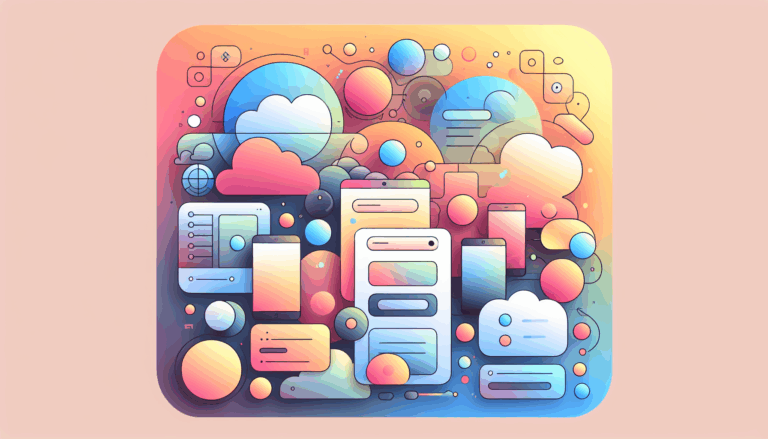Creating Holographic Data Entry for WordPress Forms
The concept of holographic data entry for WordPress forms is a fascinating area that could revolutionize the way we interact with digital interfaces. While current technology mainly focuses on enhancing WordPress form functionality with tools like WPForms, the integration of holographic elements could elevate user experience to new dimensions. Let’s explore this innovative idea and how it could be implemented, along with the role Figma plays in design.
Introduction to Holographic Communication
Holographic communication involves the use of 3D holograms to facilitate real-time, interactive digital interactions. This technology, powered by holography, artificial intelligence (AI), augmented reality (AR), and 5G connectivity, has the potential to transform various industries, including healthcare, education, and entertainment. The immersive experience it offers can make remote interactions more engaging and effective than traditional video calls or virtual meetings.
Understanding Holographic Data Entry
What is Holographic Data Entry?
Holographic data entry refers to the process of capturing and processing information through holographic interfaces. This can involve using 3D holographic projections to create interactive forms where users can input data in a more immersive and engaging manner than traditional keyboard or touch inputs.
Benefits of Holographic Data Entry
- Enhanced User Experience: Holographic interfaces can provide a more interactive and engaging method of data entry, potentially increasing user satisfaction and encouraging more accurate input.
- Accessibility: Such interfaces could cater to different user groups, especially those with disabilities or preferences for non-traditional input methods.
- Data Accuracy: By offering visual cues and interactive feedback, holographic forms could help reduce errors during data entry.
Implementing Holographic Forms in WordPress
Implementing holographic forms in WordPress involves several steps:
Designing with Figma
- Designing Holographic Interfaces in Figma: Figma is a powerful tool for designing interactive interfaces. While it doesn’t directly support holographic elements, designers can conceptualize holographic UIs using 3D visualization tools and then refine these concepts in Figma.
- Prototyping with Figma: Figma allows designers to create prototypes of their interfaces. This can help in simulating how a holographic form might interact with users, even if it’s not fully functional in a holographic context yet.
Integration with WordPress
To integrate holographic forms with WordPress, one would need to:
- Develop Holographic Technology: Currently, most WordPress form plugins like WPForms and Happy Forms focus on 2D interfaces. Developing holographic technology would require significant advances in AI, AR, and VR integration.
- Custom Development: Developers would need to create custom plugins or integrate existing AR/VR technologies with WordPress to support holographic data entry.
- Testing and Optimization: Extensive testing for usability and performance would be necessary to ensure that the holographic forms work seamlessly across different devices and browsers.
Real-World Applications and Challenges
Real-World Applications
Holographic forms could have numerous real-world applications:
- Healthcare: Interactive holographic forms could streamline patient data collection, making it more engaging and accurate.
- Education: Holographic interfaces in educational settings could enhance interactive learning experiences.
- Entertainment: Holographic data entry could create immersive experiences in gaming or interactive storytelling.
Challenges
However, there are several challenges:
- Technical Limitations: Current holographic display technologies often require specialized hardware, limiting accessibility.
- Cost: Developing and implementing holographic forms is expensive.
- Security and Ethics: Concerns about data privacy and the potential for holographic deepfakes could hinder adoption.
Future of Holographic Data Entry
The future of holographic data entry is promising, with advancements in AI, AR, VR, 6G networks, and quantum computing likely to drive innovation:
- Advancements in Display Technology: Future devices may allow holograms to be viewed without headsets or special screens.
- AI-Powered Holograms: AI-driven avatars could interact intelligently with users, enhancing data entry experiences.
- Integration with Metaverse: Holographic data entry could become central to immersive metaverse experiences.
Conclusion and Next Steps
While the concept of holographic data entry for WordPress forms is futuristic, it represents a significant opportunity for innovation in digital interaction. As technology advances, businesses looking to stay ahead can explore how to integrate these concepts into their current workflows.
To start experimenting with similar interactive designs in WordPress, consider exploring tools like WPForms for traditional form building and Figma for designing dynamic interfaces. For those interested in exploring the possibilities of holographic communication further, reaching out to Figma2WP Service could provide insights into how to incorporate such concepts into your digital projects.
Innovative technologies like holographic data entry highlight the potential for future user interfaces to become more engaging, accessible, and interactive. As such technologies continue to evolve, we can look forward to a future where interacting with digital forms becomes as natural as interacting with the physical world.
More From Our Blog
Enhancing User Engagement with Design Precision In today’s digital marketplace, landing pages play a pivotal role in converting visitors into customers. Leveraging Figma’s versatile design capabilities combined with the power of WordPress enables businesses to create highly optimized landing pages that attract and retain users effectively. This synergy not only ensures pixel-perfect designs that accurately Read more…
Transforming Creative Concepts into Dynamic Online Portfolios Building a portfolio website that truly reflects the nuances of your creative work requires more than just good design — it demands a seamless transition from concept to functionality. The journey from a portfolio design in Figma to a fully responsive, easy-to-manage WordPress site is one of the Read more…


